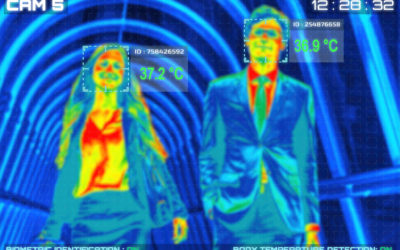Why Let Device Constraints Constrain Your Business Potential?
19
October 2020
by Eliav Gnessin
Solving with Firmware Innovation
Embedded computing devices deployed within the Internet of Things (IoT) have, for years, been challenged with the ability to compute given minimal resources.
Constraints include memory and processing capabilities and the low-power radio standards utilized as network interfaces.
Product companies and Solution providers need inexpensive computing devices at scale – not just a few dozen, but tens of thousands and even hundreds of thousands that are small, affordable, and reliable, especially for distributed implementations (for example, an entire smart city using controlled LED lighting).
The ability to network embedded devices opens up endless opportunities to develop new applications in homes, buildings, and public spaces. The value of the IoT is found in new computing services that integrate existing software services already available via the Internet with the control and data gathering capabilities of embedded devices.
Technology improvements following Moore’s law (the value of the network is based on the number of endpoints on the network) are making embedded devices more economical, smaller and more energy-efficient but not necessarily more powerful. Mass adoption equals mass production, which has contributed greatly to the growth of the IoT and Industrial IoT.
The challenge today, however, are expectations for edge devices to do a lot more work than they have previously done, and that takes more CPU power, memory, and storage capacity.
The rapid advancement and roll out of 5G wireless IoT services are exacerbating the challenge while also opening up new innovation opportunities – the networks will be amazing, but what about the edge? How do we create devices that are both powerful and resource-efficient, rugged, and affordable?
Embedded devices used in the IoT need to possess computational capabilities for the task they must perform, security, and networking abilities allowing integration with the Internet. To minimize product costs, IoT devices are to be equipped with low-power, constrained resources, combined with a production-grade, low-footprint IoT client that allows utilizing the full capabilities of the chipset.
Similar Blogs
Ten Inspiring IoT Innovations That Address The COVID-19 Crisis
While there are disasters happening around the world every day – whether natural or manmade – never in the history of the world I’ve witnessed has there been a single event that has impacted every country, every community, every business, government and family on the planet as COVID-19 has and will for years to come.
Proud of our Patent, We Celebrate CloudSwitch!
We were honored earlier this week to receive our official U.S. Patent certificate, granted in March. While we are passionate about the digital world, we were also very proud to receive this physical certificate, which represents another major milestone in our company’s history.
Meet The Genie And Learn How To Create a CFS Solution in Two Minutes
To share how simple it is to create a Connected Field Service solution using our latest innovation, Genie, we’ve put together this short video illustrating the process.


